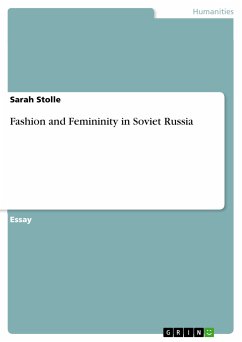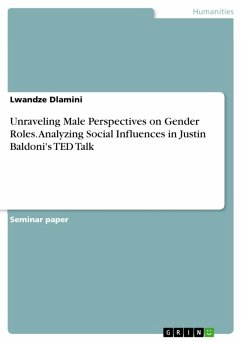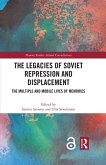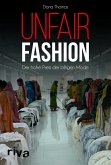Essay from the year 2006 in the subject Gender Studies, grade: 1,0 Germany, 5 Finland, University of Tampere, language: English, abstract: "Clothing as one of the most visible forms of consumption, performs a major role in the social construction of identity." The First and Second Five Year Plan of Stalin, to create out of Russia as soon as possible a fully industrialized economy, brought drastic changes in social life. Women were especially affected by these plans. They could find themselves in a dilemma between how to balance the fact to be a worker and keep in the same way their femininity. These plans offered women rights they never had before, as entering in the workforce. But in the same way it was difficult to keep femininity, especially regarded to fashion. In Soviet Russia Western luxus was seen as the "evil" - women would rather dress as men than wear the latest fashions and risk being considered traitors. In the first line a Soviet woman was an industrial worker and a housewife. Her clothes had to comply with this function - fashion had to be practicable neither than feminine. An important issue about clothes in Soviet times was the fact that they were used by authorities and society to produce and strengthen the collective ideology. One result was social repression of people who did not fit into the collective scheme. The following essay gives an overview of the women fashion in Soviet Russia; how Soviet fashion looked like and what symbols are behind these clothes. But at first I will point out two analysis about body theories; Kathy Davis' "Embody-ing Theory" and Sandra Lee Bartky: "Foucault, Femininity, and the Modernization of Patriarchal Power". These theoretical aspects are important to understand the impact of clothing on the society, in our case the impact on women and their femininity in Soviet Russia.
Dieser Download kann aus rechtlichen Gründen nur mit Rechnungsadresse in A, B, BG, CY, CZ, D, DK, EW, E, FIN, F, GR, HR, H, IRL, I, LT, L, LR, M, NL, PL, P, R, S, SLO, SK ausgeliefert werden.









